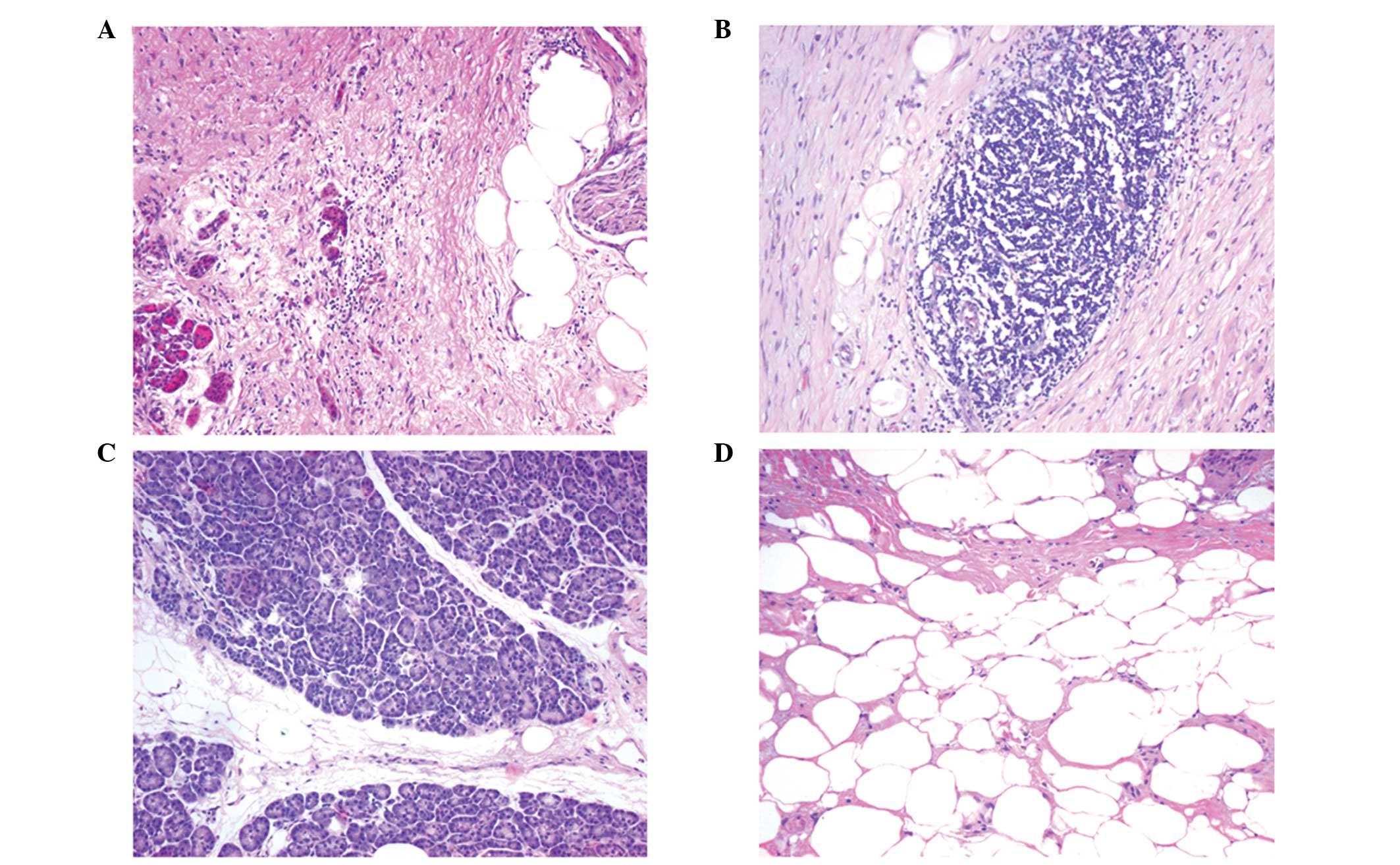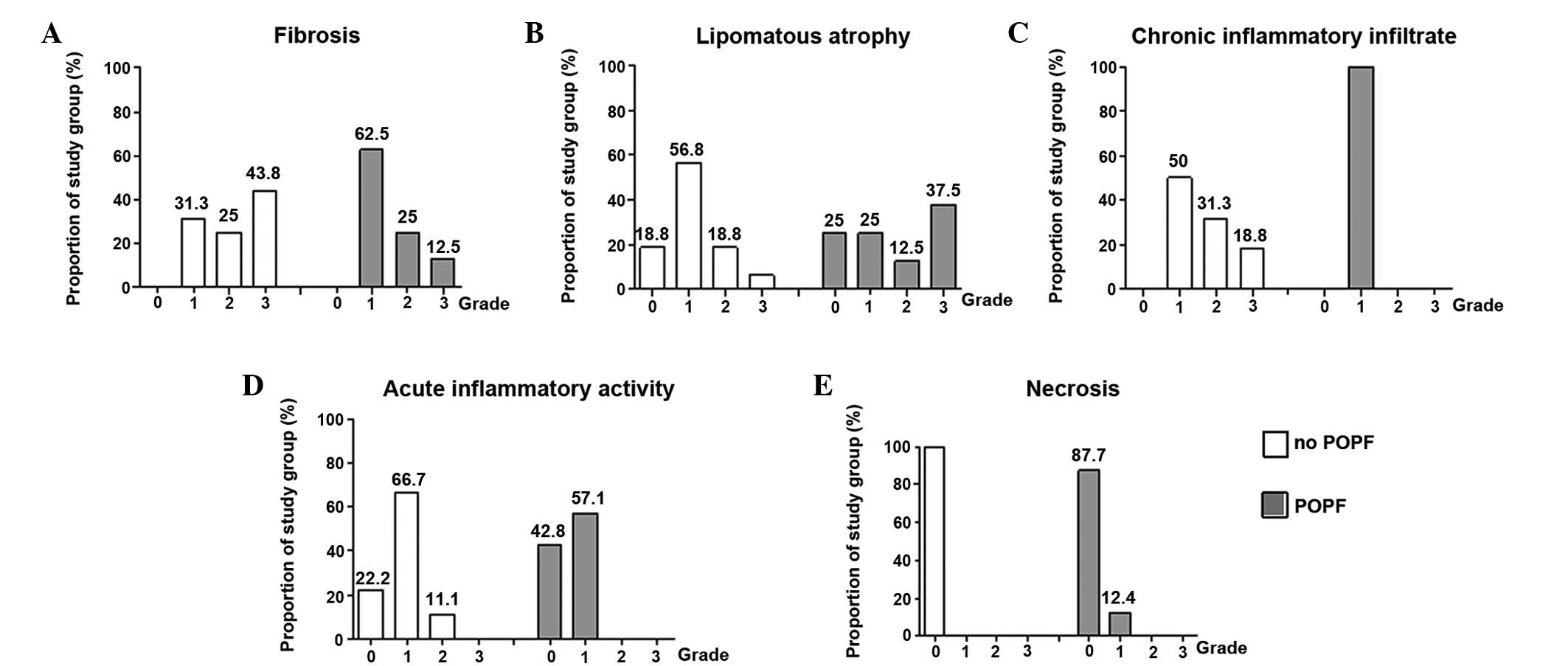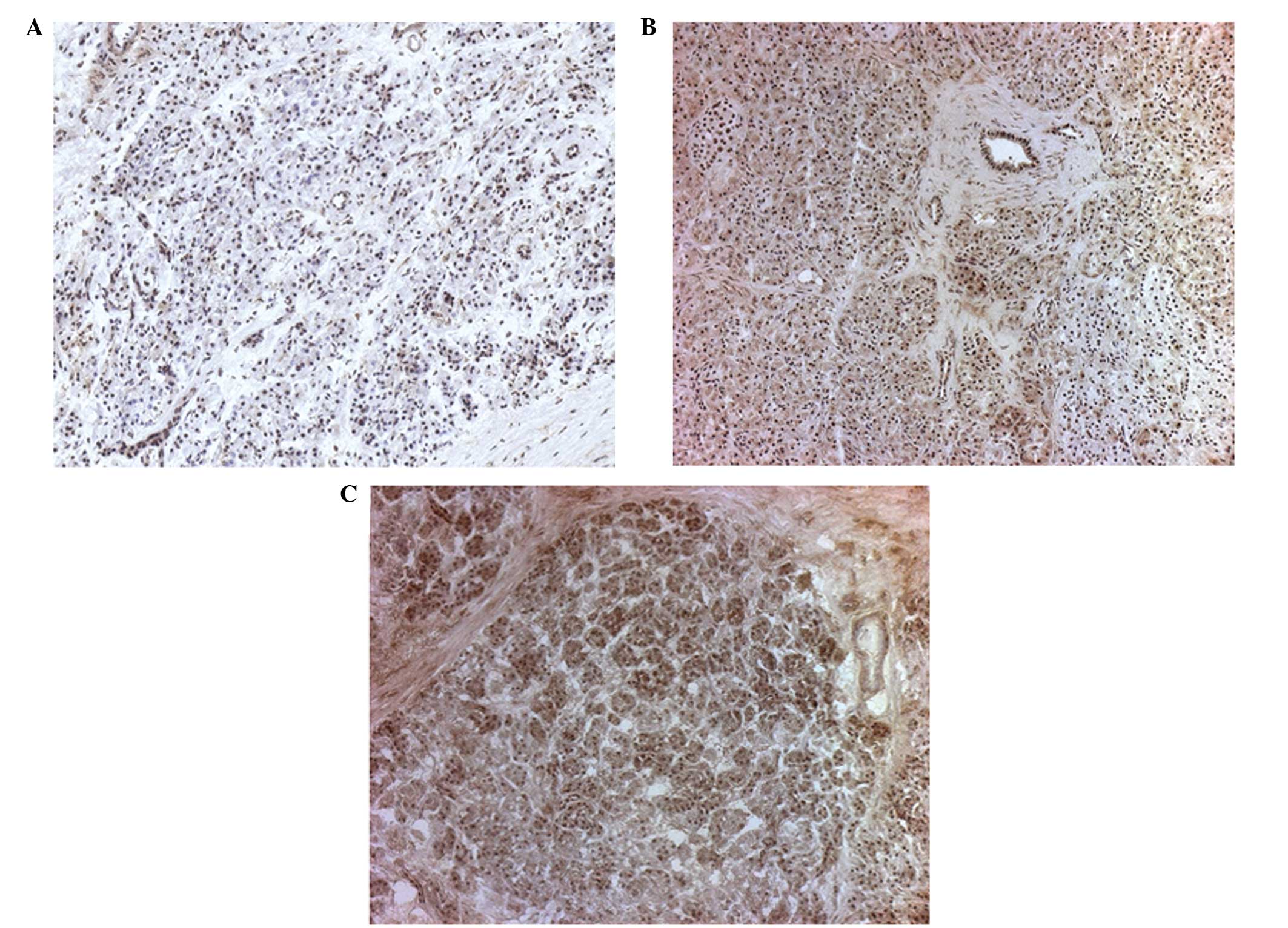Objective parameters aid the prediction of fistulas in pancreatic surgery
- Authors:
- Published online on: July 7, 2014 https://doi.org/10.3892/etm.2014.1829
- Pages: 719-726
Metrics: Total
Views: 0 (Spandidos Publications: | PMC Statistics: )
Total PDF Downloads: 0 (Spandidos Publications: | PMC Statistics: )
Abstract
Insufficiency of pancreatic anastomosis with leakage from the pancreatic stump and the development of fistulas account for the majority of surgical complications following pancreatic resection, which are often life threatening. The cause of pancreatic fistulas of the remnant tissue on a molecular level remains unclear. Thus, the aim of the present study was to investigate risk factors associated with postoperative pancreatic fistula (POPF) formation and to define parameters that may predict the resection outcome. Pancreatic resection margins were selected from 31 patients, including 16 individuals without and 15 patients with POPF, to analyze the degree of fibrosis, lipomatous atrophy, inflammatory activity and infiltration. Wound healing factors were assessed by luminex technology using tissue homogenates, while the distribution in situ was assessed using immunohistochemistry. Increased chronic inflammatory infiltration, a higher degree of fibrosis and a reduction in lipomatous atrophy were observed in the samples without anastomotic fistulas. Multiplex analysis of 38 wound healing factors demonstrated significantly higher levels of interleukin (IL)‑6, ‑8 and ‑12, glucagon‑like peptide‑1 and matrix metalloproteinase (MMP)‑1, ‑2, ‑3 and ‑12 in the group without fistulas, while lower concentrations of IL‑10, IL‑17 and gastric inhibitory polypeptide were observed. Therefore, the observations of the present study indicated that increased inflammatory infiltration and inflammatory activity, as well as higher concentrations of proinflammatory cytokines and higher MMP levels at the resection margins, predisposed individuals to a lower fistula incidence rate following pancreatic resection.












